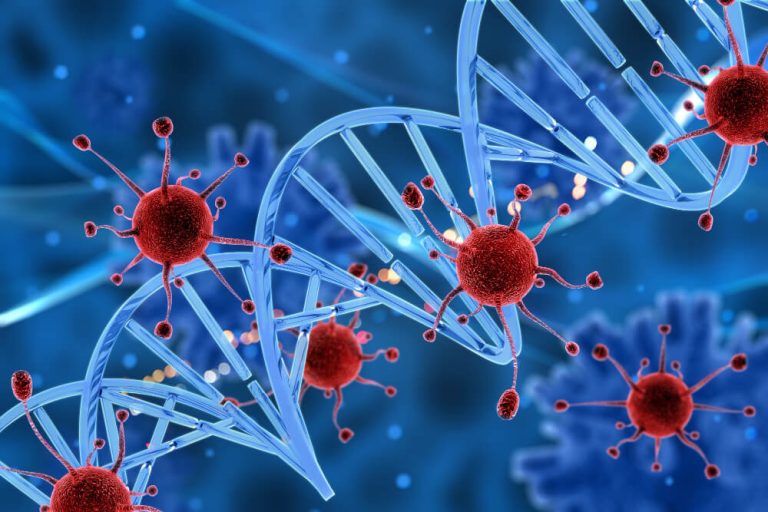The New Frontier of Health: A Deep Dive Into Longevity Medicine
For centuries, humanity has searched for the fountain of youth, a mythical spring that grants eternal life. While we haven’t found a magical fountain, we have entered a revolutionary era of science and healthcare that offers something far more tangible and valuable: a longer, healthier life. This new frontier is known as longevity medicine, a field poised to redefine our understanding of aging and wellness.
At its core, longevity medicine represents a fundamental shift in medical philosophy. Traditional medicine has largely operated on a reactive model, addressing diseases and symptoms as they arise. Longevity medicine, however, is proactive and personalized. It focuses not just on extending lifespan, the total number of years you live, but on maximizing healthspan, the number of years you live in good health, free from chronic disease and disability.
This approach is about more than just adding years to your life; it’s about adding life to your years. It uses advanced diagnostics, personalized interventions, and a deep understanding of the aging process to help you maintain peak physical and cognitive function for as long as possible. By focusing on the root causes of aging, practitioners of longevity medicine aim to compress the period of illness and decline into the shortest possible time at the very end of life.

What is the ultimate goal of this medical approach?
The primary goal is to optimize health and prevent age-related diseases before they start. It’s about building a resilient biological system that can withstand the stressors of time. Instead of waiting for a diagnosis of heart disease, diabetes, or dementia, longevity specialists work to identify risk factors and cellular dysfunctions decades in advance.
This involves a comprehensive assessment of an individual’s unique biology, genetics, lifestyle, and environment. The aim is to create a highly customized roadmap for health. This plan is not a one-size-fits-all prescription but a dynamic strategy that evolves as your body and needs change over time.
Imagine your body as a high-performance vehicle. Traditional medicine often waits for a warning light to flash before taking it to the shop. Longevity medicine is like having a dedicated team of engineers constantly monitoring every system, performing preventative maintenance, and using the highest quality fuel to ensure the vehicle runs at its absolute best for the entire journey.
Ultimately, the goal is to empower individuals to take control of their own aging process. It provides the tools and knowledge needed to make informed decisions that promote vitality, resilience, and a high quality of life well into our later years. It’s a partnership between patient and practitioner, both working towards a shared vision of extended health.

How does it fundamentally differ from traditional medicine?
The most significant difference lies in the perspective on aging itself. Traditional medicine often views aging as an inevitable process of decline, with diseases being unfortunate but expected consequences. Longevity medicine sees aging as a treatable condition, or at least a malleable process that can be influenced and slowed down.
This proactive stance changes everything. A traditional check-up might involve standard blood tests that check for overt disease. A longevity assessment goes much deeper, looking at biomarkers of aging, inflammation, metabolic health, and nutrient status to get a detailed picture of your cellular health. It’s the difference between checking if the house is on fire versus inspecting the wiring to prevent a fire from ever starting.
Another key distinction is the level of personalization. While traditional care certainly considers the individual, longevity medicine takes it to an entirely new level using advanced data. Genetic testing can reveal predispositions, while epigenetic analysis can show how your lifestyle is influencing your gene expression. This data-driven approach allows for interventions that are precisely targeted to your body’s needs.
Furthermore, the methodology is holistic. It recognizes that the body is a complex, interconnected network. Instead of treating symptoms in isolation, practitioners seek to understand the entire system. This is a core tenet of functional medicine, which heavily influences the longevity field. Learning how to apply systems biology in a clinical setting is crucial for understanding how one imbalance, like poor gut health, can cascade into issues like inflammation, cognitive fog, or skin problems. This interconnected view is central to creating effective, long-term health strategies.

What are the foundational pillars of longevity?
Achieving a long healthspan isn’t about a single magic pill. It’s a multi-faceted strategy built on several key pillars that work synergistically to support your body’s innate ability to heal and thrive. These pillars form the foundation of any effective longevity protocol.

How is nutrition approached in a new way?
In longevity medicine, food is information for your cells. The focus shifts from generic dietary guidelines to personalized nutritional strategies based on your unique biology. This might involve analyzing your genetic makeup to understand how you metabolize fats, proteins, and carbohydrates, a field known as nutrigenomics.
It’s not just about what you eat, but also when you eat. Concepts like intermittent fasting or time-restricted eating are often employed to promote cellular cleanup processes, known as autophagy. This process allows your body to recycle old, damaged cell parts, which is crucial for preventing age-related dysfunction.
A longevity-focused diet is typically rich in nutrient-dense, anti-inflammatory foods. Think colorful vegetables, fruits, healthy fats, and high-quality proteins. The goal is to provide the body with the raw materials it needs to repair damage, reduce inflammation, and support optimal mitochondrial function, the powerhouses of our cells.

What specific role does exercise play?
Exercise is one of the most powerful anti-aging tools we have, and longevity medicine prescribes it with precision. The focus is on a balanced routine that incorporates different types of movement to target various aspects of aging. It’s not just about burning calories; it’s about sending the right signals to your body.
Cardiovascular exercise, like running or cycling, is essential for heart health and improving blood flow. Strength training is critical for maintaining muscle mass, which naturally declines with age in a process called sarcopenia. Preserving muscle supports metabolic health and protects against frailty.
High-intensity interval training (HIIT) has been shown to be particularly effective at improving mitochondrial health. Finally, exercises that promote stability and flexibility, like yoga or tai chi, are important for preventing falls and maintaining mobility as we get older. The ideal exercise plan combines all these elements, tailored to an individual’s fitness level and goals.

Why is sleep considered so critical?
Sleep is not a passive state of rest; it is an active period of intense biological activity essential for longevity. During deep sleep, your body undertakes critical repair and rejuvenation processes that cannot happen during the day. This is when your brain clears out metabolic waste products, including amyloid-beta plaques associated with Alzheimer’s disease.
Your body also releases growth hormone during sleep, which is vital for cellular repair. Chronic sleep deprivation disrupts these processes, leading to increased inflammation, hormonal imbalances, and impaired cognitive function. It accelerates the aging process at a cellular level.
Longevity specialists place a huge emphasis on optimizing sleep quality and quantity. This includes practicing good sleep hygiene, such as maintaining a consistent sleep schedule, creating a dark and cool sleep environment, and avoiding screens before bed. For some, advanced tracking and interventions may be used to address issues like sleep apnea or insomnia.

How is stress managed for better aging?
Chronic stress is a potent driver of aging. When we are constantly stressed, our bodies produce high levels of the hormone cortisol. While cortisol is useful in short bursts, sustained high levels can wreak havoc on the body. It can break down muscle tissue, increase belly fat, impair immune function, and damage the brain.
Managing stress is therefore a non-negotiable pillar of longevity. This involves incorporating practices that activate the body’s relaxation response, the opposite of the ‘fight or flight’ stress response. Techniques like meditation, deep breathing exercises, and mindfulness have been scientifically shown to lower cortisol levels and reduce inflammation.
Spending time in nature, fostering strong social connections, and engaging in hobbies are also powerful stress-reduction tools. A longevity plan will help individuals identify their primary stressors and develop a personalized toolkit of strategies to build resilience and promote a state of physiological calm.

How do we actually measure the aging process?
One of the most exciting developments in longevity medicine is the ability to measure aging itself. For a long time, we only had chronological age, the number of years since you were born. But we all know people who seem much younger or older than their years. This observation is now backed by science through the concept of biological age.
Biological age is a measure of how old your cells and tissues are at a functional level. It is a far more accurate predictor of health and mortality than chronological age. A person could be 50 chronologically but have a biological age of 40, or conversely, a biological age of 60. The goal of longevity medicine is to lower your biological age or at least slow its progression.
To do this, practitioners use a variety of sophisticated tests. They look at biomarkers of inflammation like C-reactive protein, metabolic markers like fasting insulin and HbA1c, and nutrient levels. Advanced imaging can assess things like arterial plaque, while cognitive tests can measure brain function. The ability to measure and track biological age allows for a quantifiable way to see if interventions are working, providing powerful feedback and motivation.
The most cutting-edge method for measuring biological age is through epigenetic clocks. These tests analyze methylation patterns on your DNA. Methylation is a chemical tag that can turn genes on or off. As we age, these patterns change in predictable ways. By analyzing these patterns, scientists can calculate your biological age with remarkable accuracy.

What are some of the advanced therapies involved?
Beyond the foundational pillars of lifestyle, longevity medicine also employs a range of advanced therapies and interventions designed to target specific pathways of aging. These are often used after a solid foundation has been established.

What exactly are NAD+ infusions?
Nicotinamide adenine dinucleotide, or NAD+, is a vital coenzyme found in every cell in your body. It is essential for energy production in the mitochondria and for activating sirtuins, a class of proteins often called ‘longevity genes’ that are involved in DNA repair and cellular health. NAD+ levels naturally decline significantly as we age.
This decline is linked to many age-related conditions. Restoring NAD+ levels is therefore a key strategy in longevity medicine. One of the most direct ways to do this is through intravenous (IV) infusions, which deliver the coenzyme directly into the bloodstream, bypassing the digestive system for maximum absorption.
Patients often report increased energy, mental clarity, and improved physical performance after a course of NAD+ infusions. While the therapy is generally safe, it’s crucial that it’s administered by a trained professional who understands how to dose it properly and is skilled in managing patient side effects during NAD+ infusions, which can include mild nausea or flushing.

What about senolytics and other compounds?
The field is also exploring various molecules that may slow aging. Senolytics are a class of drugs that selectively clear out senescent cells. These are ‘zombie cells’ that have stopped dividing but refuse to die. They accumulate with age and secrete inflammatory substances that damage surrounding healthy cells.
While still largely in the research phase for human use, early studies on senolytics are promising. Other compounds being studied for their pro-longevity effects include metformin, a diabetes drug that appears to have anti-aging properties, and rapamycin, an immunosuppressant that has been shown to extend lifespan in numerous animal models. These interventions are at the cutting edge and should only be considered under the guidance of an expert practitioner.

How does this connect to established preventive care?
Longevity medicine can be seen as the next evolution of preventive healthcare. It takes the established principles of prevention and supercharges them with advanced diagnostics and a deeper understanding of cellular biology. The core idea of stopping disease before it starts is central to both fields.
Established health organizations have long championed the importance of preventive care through regular check-ups, screenings, and healthy lifestyle choices. Longevity medicine builds on this foundation by providing more personalized and proactive strategies. It doesn’t replace traditional prevention; it enhances it.
This approach aligns with the growing recognition that patients must take an active role in their health care to achieve the best outcomes. Longevity medicine is inherently participatory, requiring individuals to be engaged in their daily choices about diet, exercise, and stress management. It’s a collaborative effort to build health over a lifetime.
Major institutions continue to emphasize the value of preventive medicine as the most effective way to reduce the burden of chronic disease. Longevity medicine provides a powerful new toolkit to achieve this goal. By focusing on the hallmarks of aging, it addresses the root cause of nearly all major chronic diseases simultaneously. This makes the ongoing research in preventive care even more relevant, as new findings can be integrated into personalized longevity protocols.

Who can truly benefit from longevity medicine?
A common misconception is that longevity medicine is only for the wealthy or the elderly. In reality, its principles can benefit almost anyone at any age. The earlier you start focusing on your healthspan, the more runway you have to make a significant impact.
For people in their 20s and 30s, it’s about building a strong foundation and establishing healthy habits that will pay dividends for decades to come. It’s about preventing the slow, insidious damage that accumulates over time. For those in their 40s and 50s, it’s about course correction, addressing emerging issues, and optimizing health for the second half of life.
Even for individuals in their 60s and beyond, longevity medicine offers tremendous value. It can help improve quality of life, maintain independence, enhance cognitive function, and build resilience against illness. It’s never too late to take steps to improve your biological age and your overall well-being.
The journey into longevity medicine is a journey of self-discovery and empowerment. It shifts the focus from fearing old age to embracing a future filled with vitality, purpose, and health. It is the ultimate investment in your most valuable asset: yourself.
Frequently Asked Questions

How can I effectively communicate the value of a high-ticket longevity program to justify the cash-pay price?
Effectively communicating value requires shifting the conversation from cost to a lifelong investment in healthspan. Frame your program as a proactive strategy for enhancing performance, vitality, and preventing the high future costs of chronic disease. Use concrete language to explain how advanced diagnostics and personalized interventions translate into tangible benefits, such as improved cognitive function, sustained energy levels, and a higher quality of life for decades.
To reinforce this, provide transparent breakdowns of every service included in your program, from in-depth testing to direct physician access and personalized health coaching. Showcase the immense value of this high-touch, data-driven approach compared to the limitations of conventional, reactive healthcare. Patient testimonials or anonymized case studies can be powerful tools for demonstrating real-world transformations and making the investment feel both logical and compelling.

What are the biggest challenges when transitioning an existing medical practice to a cash-pay longevity model?
The most significant challenge is managing the financial bridge period while you build your new patient roster. Moving away from insurance reimbursements often causes an initial, and sometimes steep, drop in revenue, so having sufficient capital reserves to cover overhead is critical. Another major hurdle involves re-educating your existing patient base, as many may be unable or unwilling to transition to a premium, out-of-pocket model, requiring you to attract a completely new clientele.
Operationally, the transition demands a fundamental shift in your team’s mindset and skills from medical billing to direct-to-consumer marketing and sales. You must develop a strong brand identity and learn to articulate a compelling value proposition that resonates with a discerning audience. Furthermore, navigating the legal complexities of opting out of insurance and Medicare contracts requires careful planning and execution to ensure full compliance.

Beyond content marketing, what are some effective strategies for building a community around a new longevity practice?
Host exclusive, in-person events for members to foster a strong sense of belonging and shared purpose. These could include expert-led workshops on nutrition, private group fitness sessions, or seminars on biohacking and stress management. Creating a private digital forum or chat group also allows patients to connect, share their progress, and support each other, positioning your practice as a central hub for their health journey.
Another powerful strategy is to facilitate smaller, curated mastermind groups within your patient population, organized around specific goals like executive performance or athletic optimization. These groups create deep connections and accountability among members. Collaborating with complementary local businesses, such as high-end gyms, organic markets, or wellness spas, for co-hosted events or member perks can also integrate your practice into the community and reinforce its premium status.
Are you a healthcare professional, medic, or clinic owner ready to lead this revolution in health? It’s time to move beyond reactive care and master the future of medicine. Discover the most comprehensive functional medicine training, longevity training, and biohacking certification programs designed specifically for you. Master regenerative medicine protocols and anti-aging therapies with Talking Longevity and empower your patients to live longer, healthier lives.







